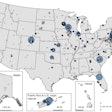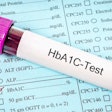
Experience with a risk assessment tool that guides the use of high-sensitivity troponin blood tests to help show whether emergency room (ER) patients have had a heart attack versus another cause of myocardial injury has been published in the New England Journal of Medicine.
The tool -- created as part of the Calculation of Myocardial Infarction Risk Probabilities to Manage Patients with Suspicion of Myocardial Infarction (COMPASS-MI) project -- integrates high-sensitivity troponin I or troponin T concentration at the time of presentation to the ER, its dynamic change during serial sampling, and the duration of time between samples. The tool creates a risk score to indicate the probability of myocardial infarction and the risk of myocardial infarction and/or death for the next 30 days.
Dr. Stefan Blankenberg, of the University Heart Center in Hamburg, Germany, and colleagues reported their experience with the tool in 15 studies with a total of 22,651 patients in the June 27 issue of the journal (NEJM, Vol. 380:26, pp. 2529-2540). The study was funded by the German Centre for Cardiovascular Research.
Of the total, 15.3% of patients had a myocardial infarction. Those with lower high-sensitivity troponin concentrations -- less than 6 ng/L -- and smaller changes during serial sampling were less likely to have had a heart attack and were at lower risk for cardiovascular events, according to the researchers.
The risk assessment tool had a negative predictive value of 99.5% for myocardial infarction; approximately half of the patients had a low risk for subsequent myocardial infarction or death over 30 days after presenting to the ER, Blankenberg et al reported.
The tool could be helpful for managing ER patients who have high but nondynamic concentrations of high-sensitivity troponin who have not been diagnosed with myocardial infarction, the researchers suggested.



















